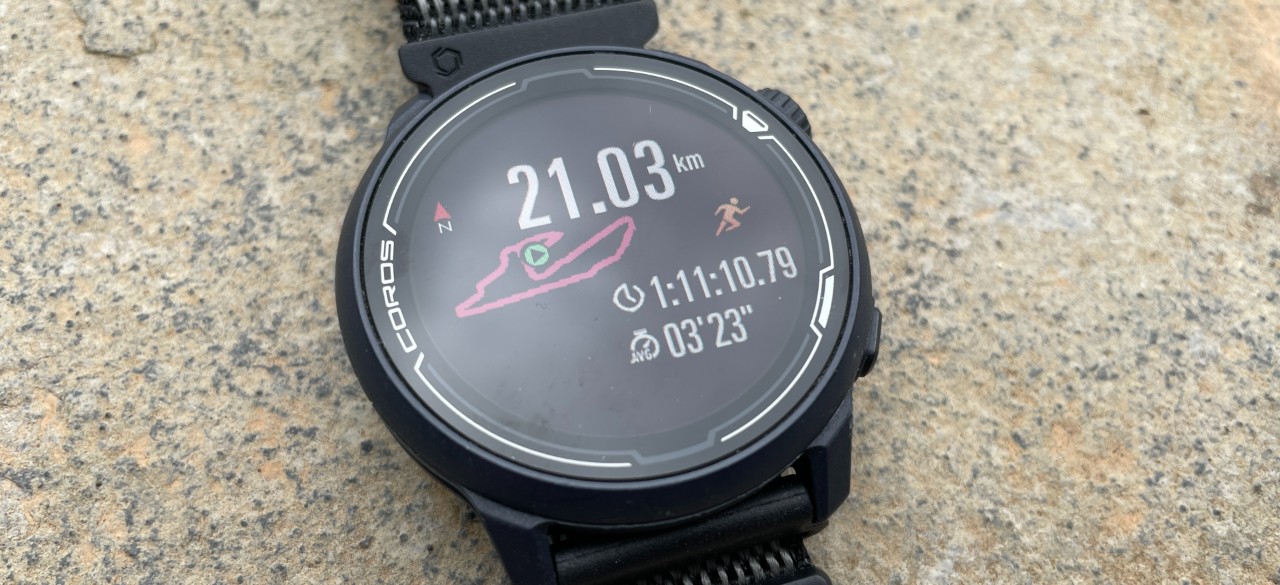Our Verdict
Offering incredible value at £180, the Pace 2 is a full multisport watch with a big battery life that tracks accurately and offers insightful training analysis.
For
- Great battery life
- Useful training analysis
- Excellent value
- Light and comfortable to wear 24/7
Against
- No navigation features
- No music storage
You can trust Coach
Simply put, a brilliant budget sports watch with a huge battery life. It is equipped with all the fundamental features runners require, it can programme and guide you through strength sessions, and it has a triathlon multi-sport mode. All of that for £180 is quite the bargain.
I’d rate the Coros Pace 2 alongside the best running watches under £200, and it’s certainly the best triathlon watch you can get for that price. While the Polar Ignite 2 offers more impressive sleep analysis and guided workouts, and the Garmin Forerunner 45 is also excellent, the Pace 2 has that lengthy battery life, accurate and detailed tracking, and useful extras like running power and insightful training analysis.
If you’re prepared to spend a little more, you’ll find the excellent Garmin Forerunner 245 in the £200-£300 bracket, which combines handy extras like music (on the more expensive 245 Music) and breadcrumb navigation with brilliant sports tracking and training analysis. There’s also the Coros Apex to consider if you can stretch to £300, which has the same features as the Pace 2 plus breadcrumb navigation and a smarter look and feel.
Running With The Coros Pace 2
The Pace 2 has a comprehensive set of running sensors and features previously reserved for devices that cost at least £250. That includes built-in GPS (plus the Russian GLONASS and Chinese Beidou systems, with the EU’s Galileo promised in a future update) and a barometric altimeter for more accurate elevation tracking. The watch can also connect to external sensors using either ANT+ or Bluetooth.
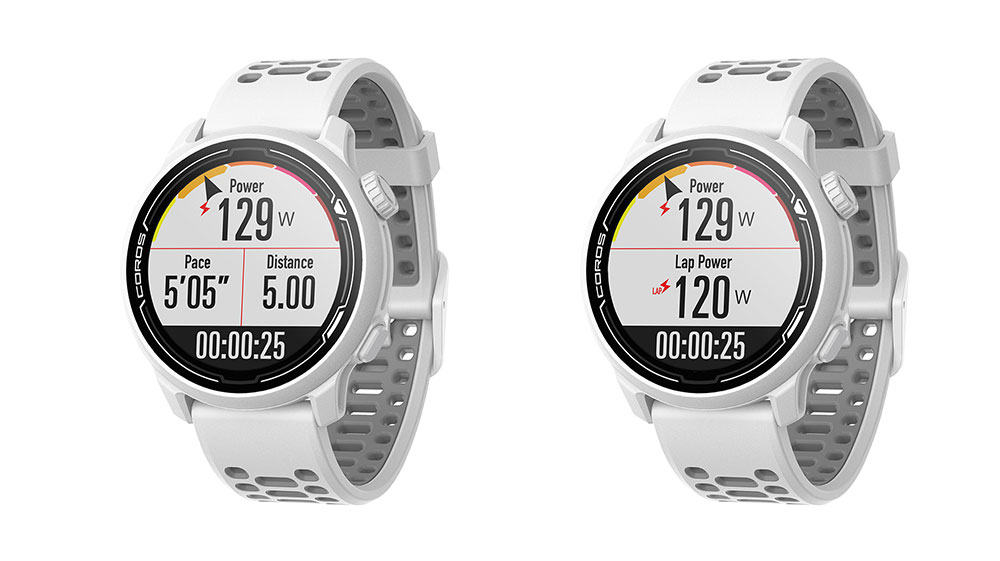
You can also get running power data using a wrist reading without the need for a pod – something I’ve previously seen only on Polar’s flagship Vantage V and Grit X watches. And, if you link the watch to a running footpod like the Stryd or Coros’s own device, you can see running technique metrics such as ground contact time on your wrist.
I found that the distance tracking of runs was accurate and the pace readings on the watch were fairly smooth, though I’d suggest using lap pace rather than current pace, which can be a bit jumpy.
The heart rate tracking didn’t perform as well, though. It lagged behind the readings from a chest strap during an interval session and was often way off the correct reading at the start of my runs, though it usually settled down after a few minutes on steady runs and was fairly close to the chest strap reading. I’d recommend pairing a chest strap with the Pace 2 for more accurate readings.
Sign up for workout ideas, training advice, reviews of the latest gear and more.
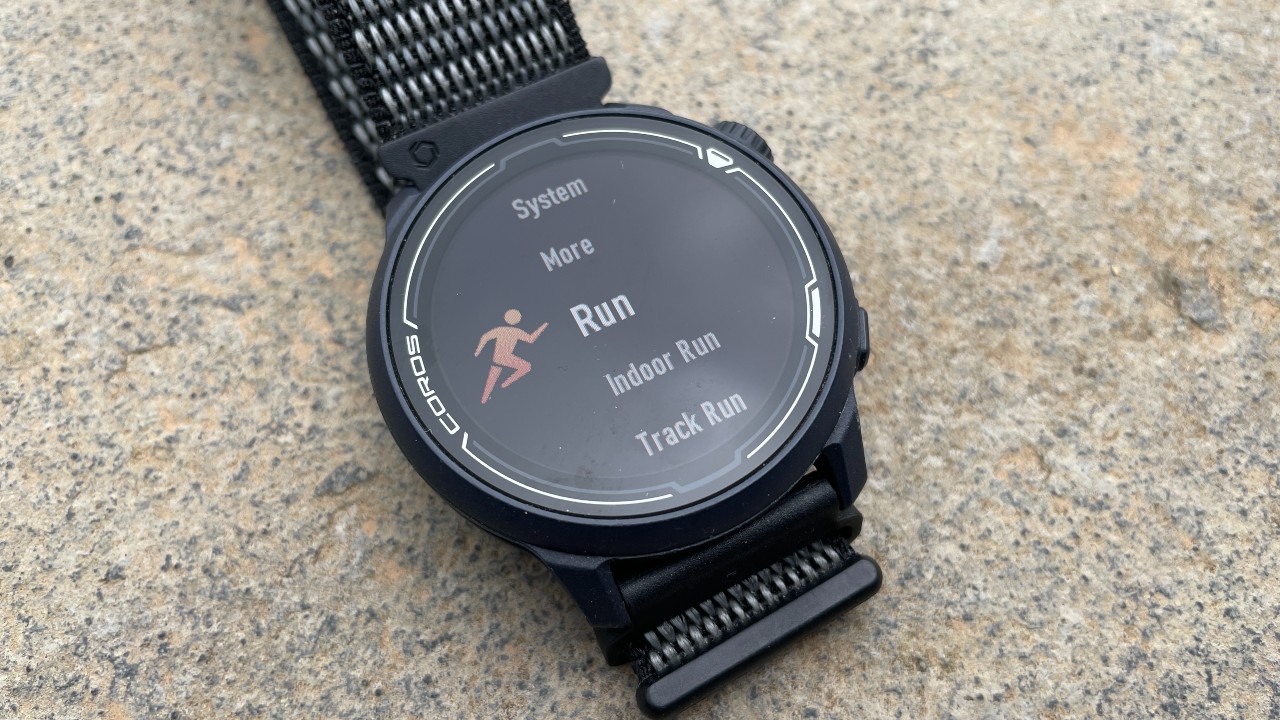
The Pace 2 also has a Track Run mode, which allows you to set the lane you’re running in during track workouts for more accurate distance measurements. I’ve used this feature many times in track workouts and it does provide a noticeable upgrade on GPS accuracy, though it still isn’t flawless at handling the distance covered.
I’m not entirely convinced this mode is needed, though, because a 400m track is fairly easy to measure distance on. Still, if you want a more precise set of stats to pore over and upload to Strava afterwards, you do get it with Track Mode, and where Coros has led others have followed – Garmin now offers a track run mode on several of its watches including the Forerunner 245 and Fenix 6 series.
One feature that isn’t on the Pace 2 is breadcrumb navigation, which is reserved for more expensive Coros devices starting with the £300 Apex. It’s an understandable omission given that navigation is rarely found on watches under £200, but a shame given that Coros has thrown pretty much everything else into the Pace 2.
However, the Pace 2 now has Coros's EvoLab feature, which brings detailed training analysis to the company’s range for the first time. This new feature brings in insights such as recovery advice, training load information, a base fitness rating and estimated race times.
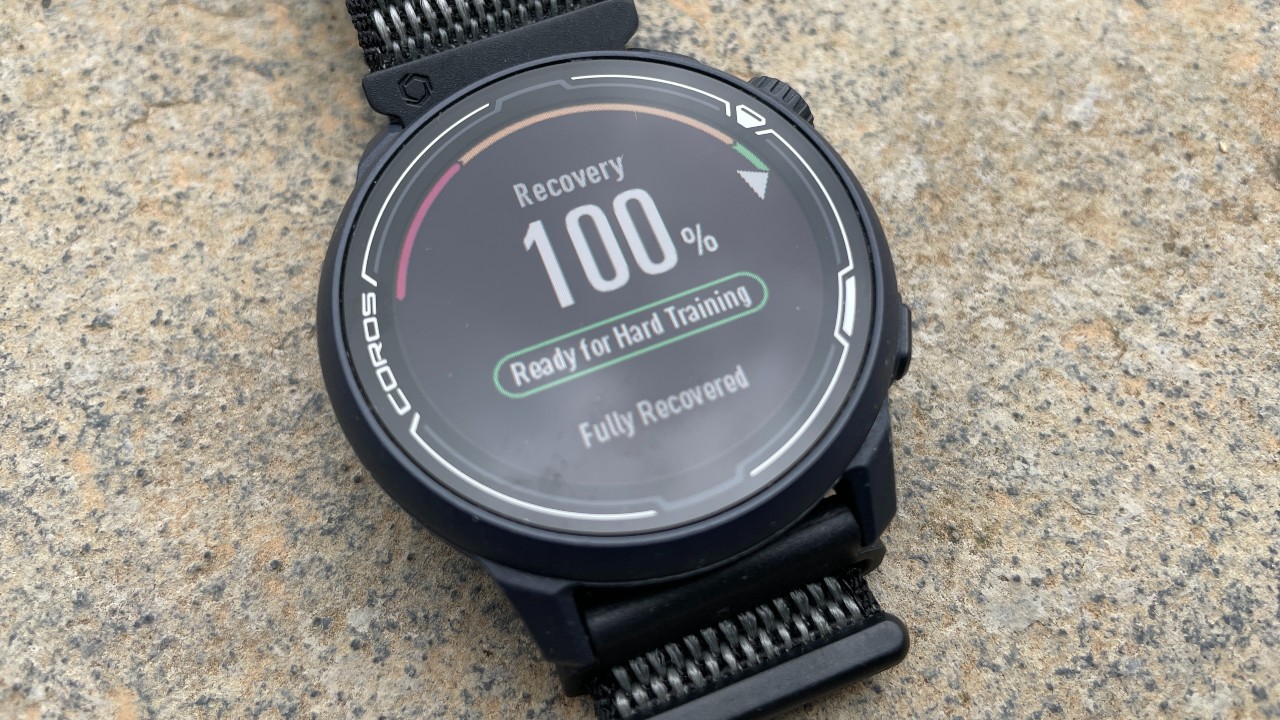
You can use this data to see if you’re training at the right level, helping to prevent overtraining or highlighting areas limiting improvements in your base fitness. The recovery advice includes info on how long it will be before you’re ready for easy or hard training, as well as a timer for when you will be fully recovered.
The data is explained clearly in the Coros app, and you also get a simplified rating like “good” or “optimised” to make the data easy to understand. This guidance helps with ratings like fatigue where you want to be pushing your body to some extent, but not overdoing it.
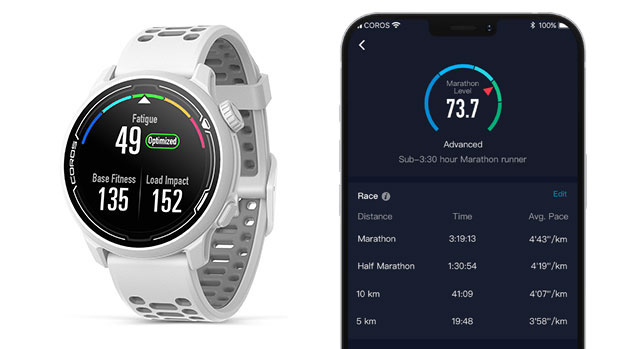
There is also a marathon level rating, which is linked to your predicted time for a full marathon and is used to rate your performance on each training run. If you underperform (based on things like heart rate for pace) you’ll get a running performance of, say, 97% of your marathon level. This isn’t necessarily a bad thing – when training hard you won’t be in peak condition on every run, but when a race (of any distance) is coming up you’d hope to see a running performance score of over 100%, suggesting you’re in prime shape to log a PB.
The new insights are shown on both the Pace 2 itself, where you get colourful graphs giving feedback on your current status, and in the Coros app, where you can see how things like your fatigue, base fitness and training load impact change over time. In the app you are also given a VO2 max estimate, along with an estimate of your resting heart rate, threshold pace and threshold heart rate.
I found that the race predictions gave an insight into the accuracy of the rest of the data collected. The EvoLab numbers are generous but a little closer to my recent PBs than the times I get from Garmin and Polar, and they come with the pace needed to run the predicted time, which is a useful touch.
The new training analysis is an important addition across Coros’s range. In pricier watches like the Apex and Vertix it helps Coros keep pace with its rivals, but at the Pace 2’s price it’s a stand-out feature. The EvoLab features are available on all Coros devices apart from the original Coros Pace, though owners of that watch will still get the EvoLab analysis in the Coros app.
Overall, you really can’t argue with the running features you’re getting on the Pace 2 for £180, and the on-paper promise is backed up by real-world performance. This watch will meet and indeed surpass the needs of most runners, offering a wealth of stats and accurate tracking.
Sports Tracking With The Coros Pace 2
The Coros Pace 2 covers running, cycling and swimming (both indoor and open-water swimming), plus a triathlon multi-sport mode so you can change disciplines in the same session. In addition you’ll find generic indoor and outdoor cardio training, as well as strength sessions.
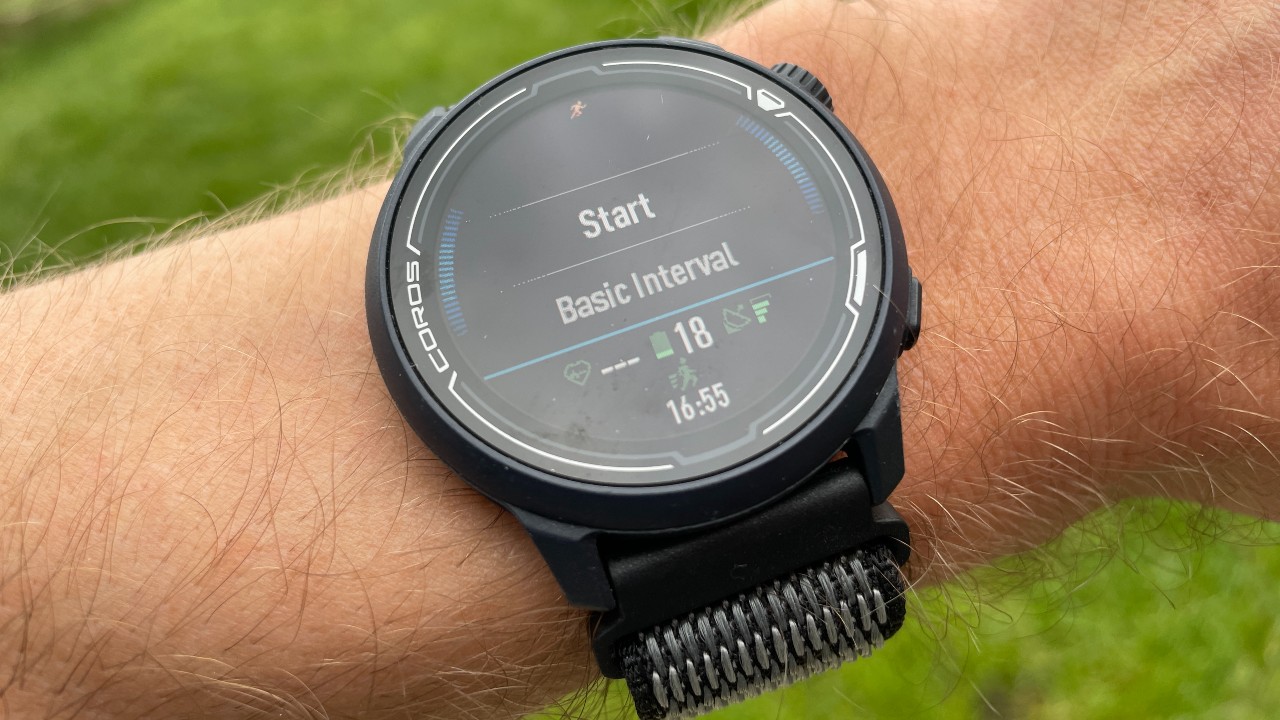
The watch supports structured workouts which you can set up in the partner app, or you can create basic interval sessions on the device itself. With running, cycling and swimming workouts you can set targets for each effort based on pace or heart rate. For strength training you can build workouts using exercises from the library (or by adding your own), and see which muscles the workout targets with a heatmap overlaid on an image of the body.

Many of Coros’s new EvoLab training analysis features extend to all sports, including things like recovery times, training load impact and base fitness ratings, and estimated fatigue. There are also training insights available during a workout, starting with the stamina stat that provides an estimate of your remaining energy as a percentage, which drops as you exercise and rises between training sessions.
When exercising you can also see the training effect of your session on your aerobic and anaerobic fitness, watching the score for each tick up. Long, steady efforts build aerobic fitness, while working in the highest heart rate zones – usually in short bursts – increases your anaerobic fitness.
For a long time a full triathlon mode was something restricted to higher-end sports watches. It’s a model Garmin has stuck with – the entry-level triathlon watch in its current line-up is the Forerunner 745, which is £450. The Coros Pace 2, a high-quality triathlon watch for less than half the price, makes that seem risible. Although it may lack some of the extra features like music and navigation, which you get in top-drawer watches, for actual tracking and workouts I’ve found the Pace 2 to be just as good.
Activity Tracking With The Coros Pace 2
Sports tracking is the Pace 2’s bread and butter. With its plasticky design it’s not necessarily ideal to wear at all times, but if you keep it on you’ll get a decent array of everyday activity stats. That includes steps and daily active calories, and you can choose to track your heart rate continuously or at ten-minute intervals. I selected 24/7 tracking because the Pace 2 has battery life to spare.
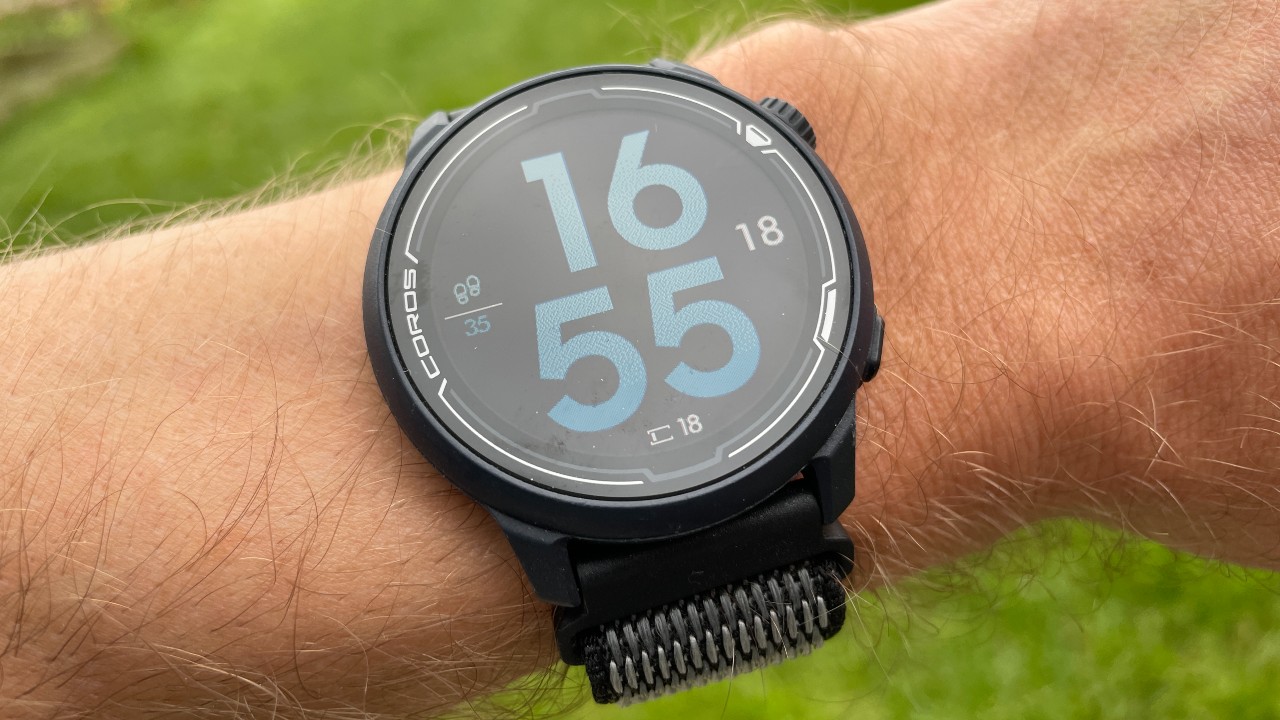
Sleep Tracking With The Coros Pace 2
The small, lightweight Pace 2 is very comfortable to wear at night, and if you do you get a graph of your sleep in the Coros app the day afterwards. This shows the periods you spent in deep and light sleep, plus your heart rate and time awake during the night.
It’s not very detailed stuff compared with what you get from Polar, Fitbit, Withings or Huawei, and it’s even lighter on detail than Garmin’s fairly basic sleep tracking. It’s passable, but if sleep tracking is a major priority for you then a Polar device would be the better option.
Smart Features On The Coros Pace 2
There really aren’t any smart features on the Pace 2 aside from displaying your phone’s notifications. You can get some features like music and weather on some devices around the £200 mark, like the Apple Watch 3 or Fitbit Versa 3, but you can’t get them in concert with sports tracking that’s as good as the Pace 2’s.
Battery Performance On The Coros Pace 2
While the Pace 2 impresses on several fronts, the battery life is where it really shines. It offers 30 hours of GPS battery life and in my experience it barely drains at all between training sessions, even with 24/7 heart rate and notifications enabled. It would last ten to 12 days during a busy training period where I would be running outside most days and also doing strength, yoga and cycling sessions indoors.
To put that into context, it lasted longer than the Garmin Fenix 6 Pro I was wearing on my other wrist. That watch costs £600 and offers 36 hours of GPS but drains faster in between training. The only watches that can really beat the Pace 2 on battery are Coros’s more expensive devices, like the Vertix, which offers 60 hours of GPS battery life, or Garmin’s biggest and most expensive watches like the Fenix 6X Pro.
Design Of The Coros Pace 2
The Pace 2 isn’t a garish watch, but it is still clearly a sports watch whether you pair it with the silicone or nylon straps available for it. It’s no less attractive than Garmin’s cheaper Forerunners, but it’s not as stylish as smartwatches from the likes of Fitbit, Huawei and Apple at the same price or less, and Polar’s Ignite sports watch is also more suited to everyday wear.

Nick Harris-Fry is a journalist who has been covering health and fitness since 2015. Nick is an avid runner, covering 70-110km a week, which gives him ample opportunity to test a wide range of running shoes and running gear. He is also the chief tester for fitness trackers and running watches, treadmills and exercise bikes, and workout headphones.
